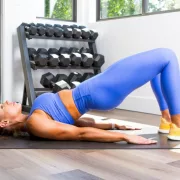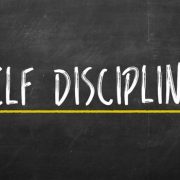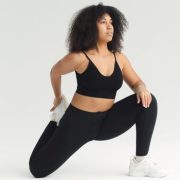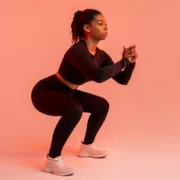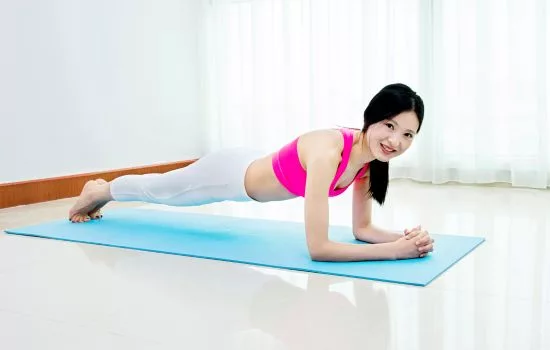
How to Do a Plank for Beginners: A Step-by-Step Guide to Core Strengthening
If you’re on the lookout for a simple, yet incredibly effective exercise that works your entire body, then it’s time for you to embrace the mighty plank. This powerhouse move has the potential to enhance your fitness levels like never before, especially if you’re a beginner. It’s not just about your abs; the plank strengthens your shoulders, arms, glutes, and legs too! So, if you’re eager to start your “plank for beginners” journey, you’re in the right place. Let’s dive in!
Why You Should Plank
Before we head on to the step-by-step guide, let’s talk about why you should incorporate the plank into your workout routine. As you progress, you might also start noticing some Signs Your Glutes are Growing, a clear indication of your improving fitness levels.
- Full-body workout: The plank is an all-encompassing exercise that targets various muscle groups, leading to overall body strength.
- Boosts core strength: Planks mainly focus on the core, helping to build endurance and stability.
- Enhances posture and balance: Regular plank workouts for beginners can lead to improved posture and better balance.
- Accessible and versatile: No equipment, no problem! You can do a plank anywhere, anytime.
Also Read: Workout Outfits That Make You Look Like A Gym-Fluencer
The Perfect Plank for Beginners: Let’s Break It Down
As we delve into this plank workout for beginners, remember, quality trumps quantity. It’s not about how long you can hold the plank, but how well you maintain the form.
Step 1: Get Into Position
- Start by getting down on all fours – hands and knees on the floor.
- Your palms should be flat, directly under your shoulders, and your fingers spread wide for better balance. This alignment is vital for distributing your weight evenly and preventing unnecessary strain on your shoulders.
Step 2: Extend Your Legs
- Extend one leg at a time, so you are balancing on the balls of your feet. Your body should form a straight line from your head to your heels.
Step 3: Engage Your Core
- The secret to a proper plank is engaging your core. Think of pulling your belly button towards your spine. This engagement supports your lower back, promotes proper alignment, and ensures that your core muscles are activated throughout the plank.
Step 4: Hold the Position
- Keep your neck and spine neutral by looking at a spot on the floor about a foot beyond your hands. Your head should be in line with your back.
- Now, hold this position. Beginners should aim for 10-20 seconds per set. Gradually, as your core strength improves, you can increase this time.
Also Read: Best Chest Workouts With Cables
Plank Pitfalls to Avoid
Even with the best intentions, a plank for beginners can sometimes go awry. Here are some common pitfalls to avoid:
- Arching or sagging your back: This is a common mistake that could lead to back pain. Remember, your body should form a straight line from head to heels.
- Holding your breath: Breathing helps engage your core and keeps you focused. Make sure to breathe in and out slowly and steadily.
- Placing your hands too close together: This may strain your shoulders and reduce your stability. Keep your hands shoulder-width apart.
Also Read: How to Grow Your Glutes: 10 Proven Methods for Booty Development
Building Your Plank Endurance: A Sample Plank Workout for Beginners
Now that you know how to plank, let’s build up that core strength and endurance! Here’s a sample “plank workout for beginners” routine to get you started:
Day 1-3: 2 sets of 10-20 second holds, rest for 60 seconds in between.
Day 4-7: 3 sets of 15-30 second holds, rest for 60 seconds in between.
Day 8-10: 4 sets of 20-40 second holds, rest for 60 seconds in between.
Day 11-14: 4 sets of 30-50 second holds, rest for 60 seconds in between.
Remember, the goal is not to push yourself to hold the plank until you collapse. It’s all about maintaining proper form, even if it means holding for a shorter period. Over time, your core will become stronger and you’ll be able to hold the plank for longer durations.
Also Read: Weight Watchers vs Keto: How to Choose the Best Diet Plan
Beyond the Basic Plank
Once you’ve mastered the basic plank for beginners, there are numerous variations to challenge your core strength and keep your workouts interesting. Here are a few options:
Forearm Plank: Instead of holding yourself up on your hands, rest on your forearms. This variation can be a bit more challenging but is great for strengthening the core.
Side Plank: This targets the obliques and helps improve balance. Lie on one side, prop yourself up onto your forearm, and stack your feet on top of each other. Lift your hips off the ground and hold.
Reverse Plank: Sit on the floor with your legs in front of you. Place your palms on the floor behind you, fingers pointing towards your feet. Push up until your body forms a straight line from head to toe.
Also Read: Do Hydration Multipliers Actually Work? We Investigate
Wrapping Up: Your Journey to a Stronger Core
Embarking on a plank workout for beginners is a fantastic way to build a solid fitness foundation. It’s a simple, yet powerful exercise that can significantly enhance your core strength, improve your posture and balance, and provide a full-body workout.
Remember, the key to a successful plank is proper form. As a beginner, take your time to learn the technique, and be patient with your progress. Don’t rush — your core strength will build up over time. Celebrate each improvement, no matter how small, and enjoy the process. After all, this is just the beginning of your exciting fitness journey!
Now, are you ready to get planking?
Frequently Asked Questions
If you’re new to the plank, aim to incorporate it into your workout routine 3-5 times a week. As with any exercise, it’s important to give your body time to rest and recover. As your strength and endurance improve, you can gradually increase the frequency and duration of your planks.
Yes, it’s generally safe to plank every day as long as you’re using proper form and not experiencing any pain. However, remember that rest is also essential for muscle recovery and growth. If you’re planking every day, ensure you’re also varying your exercises to work different muscle groups and prevent overuse injuries.
If you’re feeling the plank more in your arms and legs, it could be a sign that your form needs adjustment. Ensure your elbows are directly under your shoulders, your body forms a straight line from head to heels, and your core is engaged. If you continue to experience discomfort, consider seeking guidance from a fitness professional.
Start with what feels comfortable for you. For most beginners, this might be 10-20 seconds. The key is to maintain proper form. As your core strength improves, you can gradually increase the duration of your planks.
Planks are an excellent exercise for strengthening the core, but they’re not a magic bullet for weight loss. Reducing belly fat involves a combination of regular physical activity (including both cardio and strength training), a balanced diet, and a healthy lifestyle. However, by strengthening your core, planks can help improve your overall body composition and support your weight loss goals.

